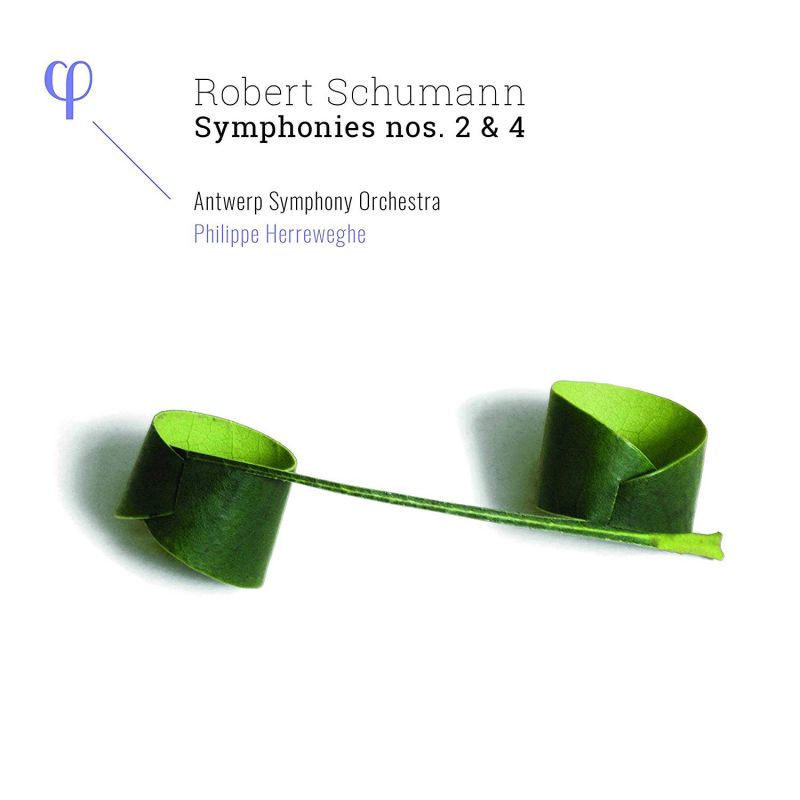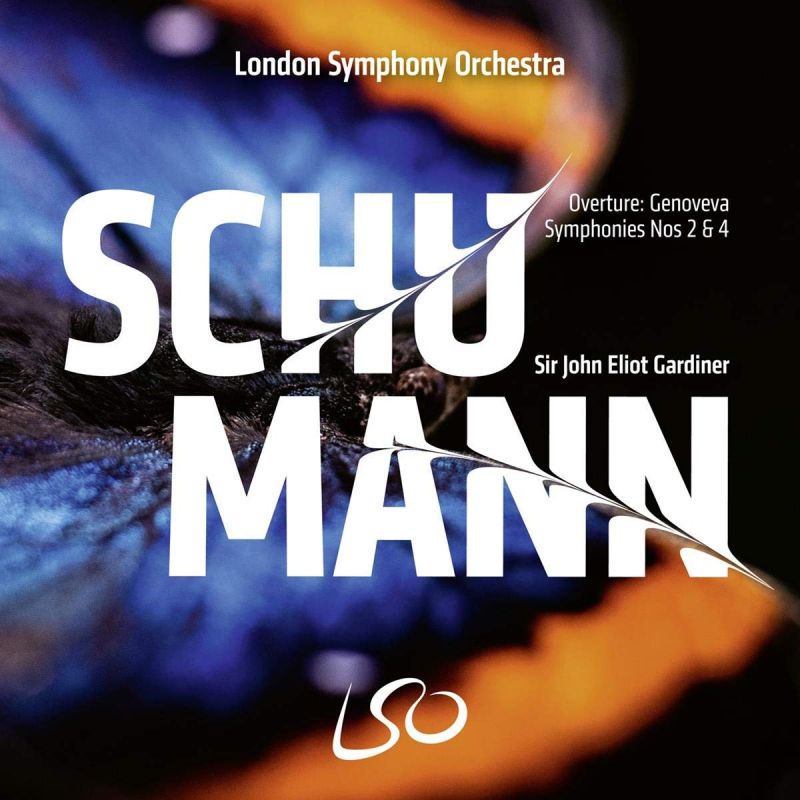SCHUMANN Symphonies 2 & 4 (Gardiner. Herreweghe)
View record and artist detailsRecord and Artist Details
Composer or Director: Robert Schumann
Genre:
Orchestral
Label: PHI
Magazine Review Date: 12/2019
Media Format: CD or Download
Media Runtime: 65
Mastering:
DDD
Catalogue Number: LPH032

Tracks:
| Composition | Artist Credit |
|---|---|
| Symphony No. 2 |
Robert Schumann, Composer
Antwerp Symphony Orchestra Philippe Herreweghe, Conductor Robert Schumann, Composer |
| Symphony No. 4 |
Robert Schumann, Composer
Antwerp Symphony Orchestra Philippe Herreweghe, Conductor Robert Schumann, Composer |
Composer or Director: Robert Schumann
Genre:
Orchestral
Label: LSO Live
Magazine Review Date: 12/2019
Media Format: Super Audio CD
Media Runtime: 69
Mastering:
DDD
Catalogue Number: LSO0818

Tracks:
| Composition | Artist Credit |
|---|---|
| Genoveva |
Robert Schumann, Composer
John Eliot Gardiner, Conductor London Symphony Orchestra Robert Schumann, Composer |
| Symphony No. 4 |
Robert Schumann, Composer
John Eliot Gardiner, Conductor London Symphony Orchestra Robert Schumann, Composer |
| Symphony No. 2 |
Robert Schumann, Composer
John Eliot Gardiner, Conductor London Symphony Orchestra Robert Schumann, Composer |
Author: David Threasher
One would expect the LSO, in the upfront but unsubtle acoustic of the Barbican, to sound more extrovert – even brash – than the softer-grained Antwerp SO in the plusher Queen Elisabeth Hall. And again Herreweghe seeks the poetry where Gardiner drives through for maximum dramatic effect. Oddly, Herreweghe’s string section sounds the smaller, although the two are of similar dimensions. The pay-off for Herreweghe is that this promotes the woodwind in the balance – not that the LSO’s virtuoso winds are backwards in coming forwards. In places such as the two slow introductions, Herreweghe hews closer to the beat, Gardiner to the contour of the undulating phrase. Shaving only 10 seconds off Herreweghe’s timing, Gardiner distils more Mendelssohnian fairy-lightness in the Second’s Scherzo. He also knows how to set the music free: when the clarinet brings back the arching theme of the slow movement in inversion in the Second’s finale (four after fig R, 2'40"), Gardiner’s performance takes wing, while Herreweghe’s remains frustratingly earthbound.
Herreweghe remains faithful to the familiar revised 1851 version of the Fourth, while Gardiner opts for the tauter, more compact original 1841 version. (His ORR cycle contains both, and he writes that he considers the alterations to the later version a ‘net loss’ over the original.) Gardiner also offers a suitably agitato performance of the Genoveva Overture.
The verdict remains the same, however: Herreweghe contemplating these masterpieces serenely from within, Gardiner going all out for visceral sensation. The London performances bring the music most readily to life: storytelling as opposed to the Belgians’ reportage. Good though it is to be updated on both conductors’ approaches to this music, neither disc fully replaces its predecessor(s), and perhaps only the (presumed) continuation of the respective cycles will resolve the matter one way or the other. Nevertheless, Gardiner’s ORR traversal of all the symphonic works remains a firm recommendation, along with Dausgaard, whose more recent Swedish series remains a strong modern-instrument alternative.
Discover the world's largest classical music catalogue with Presto Music.

Gramophone Digital Club
- Digital Edition
- Digital Archive
- Reviews Database
- Full website access
From £8.75 / month
Subscribe
Gramophone Full Club
- Print Edition
- Digital Edition
- Digital Archive
- Reviews Database
- Full website access
From £11.00 / month
Subscribe
If you are a library, university or other organisation that would be interested in an institutional subscription to Gramophone please click here for further information.




